Regulators are playing catch-up with the technologies and markets which are developing at high speed and carry significant risks as they mature. The requirements are constantly changing, it’s easy to feel overwhelmed.
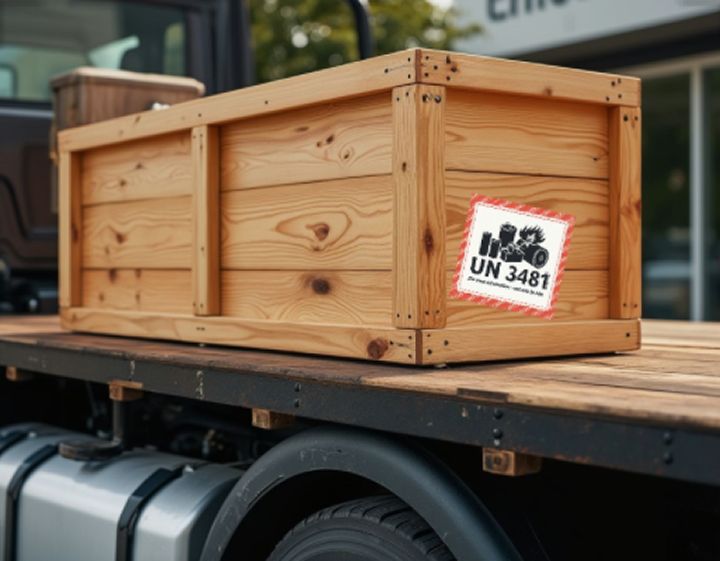 End-of-Life and Damaged Battery Shipping: Navigating State and Federal Regulations
End-of-Life and Damaged Battery Shipping: Navigating State and Federal Regulations

Article from | Bluewater Battery Logistics
Navigating the world of battery transportation can feel like trying to solve a puzzle with pieces that just don’t seem to fit.
We have energy transition under way, when many technologies and even the whole markets are switching to electric power – EVs, forklifts (phasing out the last diesel and propane models in the next 5 years in California, with the current share of electric already around 60%), construction equipment, power storage for home solar, as well as for the utility-scale solar plants, and the list goes on. All these various applications require a multitude of batteries, big, small, in different forms and shapes, but also different chemistries, weight and Watt-hour capacity.
Regulators are playing catch-up with the technologies and markets which are developing at high speed and carry significant risks as they mature. The requirements are constantly changing, it’s easy to feel overwhelmed. This article helps to navigate the issue of applying today’s regulations to your specific needs.
 Truck transporting end-of-life li-ion batteries overturned, container catching fire on I-15 in Sep 2024. Following this incident U.S. Rep. Dina Titus is advocating for stricter regulations on the transportation of lithium-ion batteries: maximum charge of 30% and testing for impact power comparable to traffic incidents.
Truck transporting end-of-life li-ion batteries overturned, container catching fire on I-15 in Sep 2024. Following this incident U.S. Rep. Dina Titus is advocating for stricter regulations on the transportation of lithium-ion batteries: maximum charge of 30% and testing for impact power comparable to traffic incidents.
Understanding Battery Transportation Regulatory Framework
When it comes to shipping batteries, the Department of Transportation (DOT) lays down the law. Their regulations are designed to keep everyone safe, and they cover everything from how batteries are packaged to the labels that must be displayed. The DOT has recently published the “Lithium Battery Guide for Shippers”, to help shippers safely package lithium cells and batteries for transport by all modes, in accordance with the latest (May 10, 2024; HM-215Q) international harmonization regulatory requirements.
If you’re looking to ship internationally, this can be a different story, you’ll also need to be aware of the standards set by the International Civil Aviation Organization (ICAO) and the International Maritime Dangerous Goods Code (IMDG Code). These organizations have their own sets of rules that are just as crucial to follow.
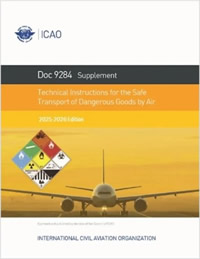
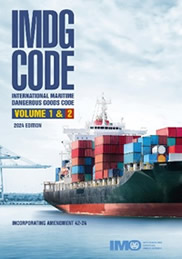
The US Hazardous Materials Regulations (HMR) and international regulations are complex and difficult to navigate particularly for those not using them regularly. Your best resource is to work with professionals that are knowledgeable and have extensive experience applying the regulatory requirements while understanding the best practices to enhance safety while reducing unnecessary expenses. For example, even if your batteries are classified correctly, and have all the required labels, you still need to make sure your shipper is trained and certified for hazmat transportation. Additionally, there are a number of innovative packaging alternatives, each having advantages and disadvantages which the professionals can recommend. The complexity and the high risks involved makes transportation companies with a Hazmat focus join forces with battery logistics specialists and their Hazmat legal partners to make sure the battery shipments are safe and compliant.
Applying Shipping Conditions and Requirements
One example of such a group is led by the second-life battery market specialist Bluewater Battery Logistics, which partnered with HazMat Safety Consulting (HSC). HSC’s president Bob Richard served as the Deputy Associate Administrator for the Pipeline and Hazardous Materials Safety Administration (PHMSA), the regulatory agency responsible for writing and enforcing the DOT’s Hazardous Materials Regulations. Bob lead U.S. delegations to international meetings and served as the chairman of the UN Sub-Committee of Experts on the Transport of Dangerous Goods that is responsible for maintaining the UN Model Regulations including lithium battery regulations.
Bob Richard: “When shipping lithium batteries, it is essential to understand why a regulation is written and how to practically implement it into your company. These regulations are dynamic and continually changing. HSC can help to identify compliance issues — before they become a problem”.
There’s a significant difference between new batteries, end-of-life batteries and those determined to be damaged or defective. Recalled batteries pose a significant challenge. New batteries usually have fewer restrictions, while end-of-life batteries and damaged batteries require more stringent handling due to their potential hazards. Further on, batteries headed for recycling may have different sets of requirements (limited state of charge, marking and labelling, packaging, etc.) compared to those batteries headed for their second-life applications, or for repair or refurbishing for their original application.
Handling intact batteries might seem straightforward, but what happens if a battery is defective? You’ll need to take extra precautions. Defective batteries can leak harmful electrolyte, or worse – we’ve all seen powerful fires following a thermal run-away event involving compromised or defective batteries. It’s vital to have a clear understanding of how to package and label them to minimize risks and potential enforcement actions by regulatory agencies such as PHMSA.
Packaging and Labeling Guidelines
Proper packaging is not just a formality; it’s a necessity. Most battery shipments must meet specific UN-approved packaging requirements to ensure that they survive the journey intact, without posing a health and safety risk. Getting packaging guidance that is specific to the weight, power output, condition and chemistry of your batteries is essential, especially for larger or heavier batteries for which the regulations require extra measures to prevent thermal events during transportation.
Labeling is equally important. Every package must display the correct hazardous materials labels, along with the appropriate UN markings. This isn’t just about compliance; it’s about communicating the risks to people handling the shipment, including emergency responders. Accurate shipping papers are crucial too, detailing the contents, handling instructions, and emergency contact information. This ensures that if something goes awry, everyone knows how to respond.
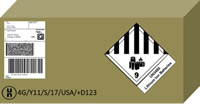

Examples of packaging and labeling for lithium batteries shipping.
Employee Training and Safety
One of the most effective ways to ensure safe and compliant shipping is through proper training, especially hazardous materials (HazMat) training. Getting detailed, clear and straightforward instructions tailored to your everyday operations for your team members play a critical role in the shipping process. An access to the full-blown document with DOT regulations is not equipping them with the right knowledge, there is a need for a clear set of instructions.
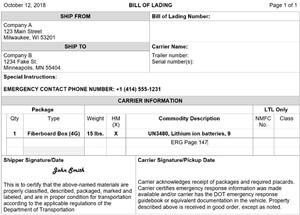 Bluewater provides customers with access to customized training materials created to help the staff stay informed about the latest regulations and best practices. Generic online or classroom courses that are not customized to the operations are typically ineffective.
Bluewater provides customers with access to customized training materials created to help the staff stay informed about the latest regulations and best practices. Generic online or classroom courses that are not customized to the operations are typically ineffective.
Establishing a clear communication channel for reporting incidents or near-misses is also crucial and consistent with establishing a corporate safety culture. It empowers your team to take immediate action and learn from any challenges they face.
Conclusion
Understanding the regulations governing battery transportation is essential for the safety of your team, the public, your customers and the environment. By being informed and compliant, you can avoid costly fines, litigation, costly insurance rate increases.
The full set of shipping capabilities and legal expertise of your battery logistics partner needs to include the practical knowledge and expertise of applying the changing regulations in the rapidly developing battery manufacturing and logistics space.
The content & opinions in this article are the author’s and do not necessarily represent the views of AltEnergyMag
Comments (0)
This post does not have any comments. Be the first to leave a comment below.
Featured Product


